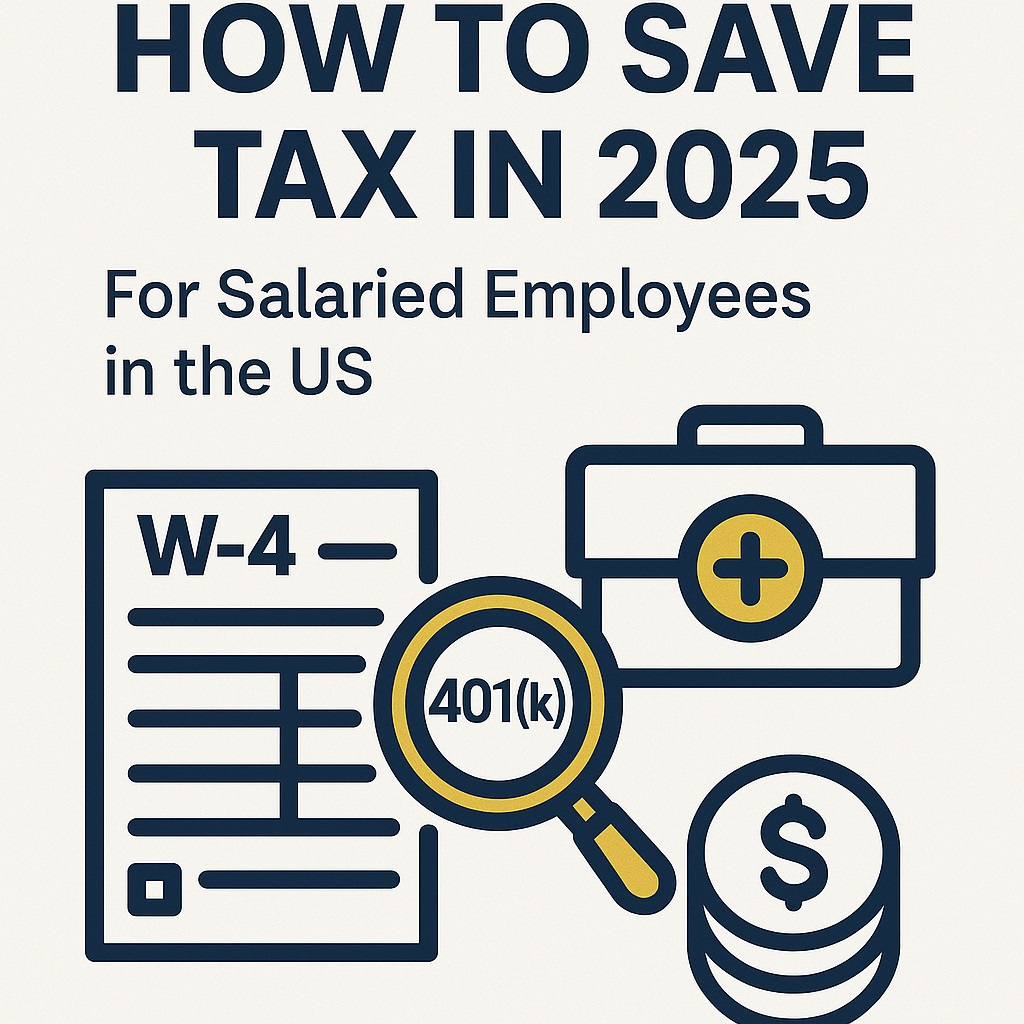
Written and reviewed by the Pulsewire Finance & Tax Desk – guiding your financial well-being.
As a salaried employee in the United States, navigating the complexities of tax season can often feel overwhelming. However, proactive tax planning is not just about compliance; it’s a powerful tool to maximize your take-home pay and accelerate your financial goals. With changes often occurring year to year, understanding the latest strategies for 2025 is crucial. This comprehensive guide will walk you through key tax-saving tips tailored specifically for salaried employees, helping you minimize your tax liability and keep more of your hard-earned money.
1. Understand Your Tax Situation and Optimize Your W-4
- Review Your Paystub: Check your gross income, federal and state tax withholdings, Social Security, Medicare, and deductions. Understanding your actual take-home pay is crucial for planning.
- Update Your W-4 Form: Life events like marriage, children, or second income should prompt a W-4 update. Use the IRS Tax Withholding Estimator to ensure accurate withholding.
- Know Your Tax Bracket: For example, in 2024, a single filer earning between $44,726 and $95,375 was taxed at 22%. Bracket thresholds will shift in 2025. Plan income, bonuses, and stock options accordingly.
2. Maximize Retirement Contributions
Retirement accounts are some of the most efficient tax-saving tools. The IRS incentivizes retirement savings with deductions, deferrals, and tax-free growth depending on the account type.
- 401(k)/403(b): Pre-tax contributions reduce your taxable income. In 2025, expected limits are around $23,000 for those under 50, and $30,500 for those 50 and above. Always contribute at least the employer match.
- Traditional IRA: Eligible taxpayers can deduct up to $6,500 (or more) depending on income and coverage by a work plan. For example, if your modified AGI is below $78,000 (single), you may get a full or partial deduction.
- Roth IRA/401(k): Roth accounts offer tax-free qualified withdrawals. These are especially valuable if you expect to be in a higher tax bracket in retirement. Be aware of the income phase-out for Roth IRA eligibility.
- Catch-Up Contributions: If you’re 50+, take advantage of higher limits to boost retirement savings while lowering current taxable income.
3. Leverage HSAs & FSAs
Health-related tax shelters can significantly reduce your taxable income, especially for those with recurring medical costs.
- Health Savings Account (HSA): Available if enrolled in a High Deductible Health Plan (HDHP). Contributions are tax-deductible, earnings grow tax-free, and withdrawals for medical expenses are tax-free — known as the triple tax benefit. 2025 limits may exceed $4,150 for individuals and $8,300 for families.
- Flexible Spending Account (FSA): Funded via pre-tax payroll deductions to pay for eligible health and dependent care expenses. Be mindful of the “use it or lose it” rule unless your employer allows a grace period or carryover.
4. Explore Deductions and Credits
Understanding the difference between deductions and credits is vital. Deductions lower your taxable income; credits reduce your tax bill dollar-for-dollar.
- Standard Deduction: Projected to be over $14,000 for single filers and $29,000 for married couples filing jointly in 2025.
- Itemized Deductions: Includes mortgage interest, charitable donations, state and local taxes (up to $10,000), and medical expenses exceeding 7.5% of AGI.
- Child Tax Credit: Up to $2,000 per qualifying child. Watch for any extensions or changes under new legislation. (IRS)
- Education Credits: American Opportunity Tax Credit (AOTC) offers up to $2,500 per student. The Lifetime Learning Credit offers up to $2,000 per return.
- Earned Income Tax Credit (EITC): Benefit for lower-income workers. Eligibility is based on income and number of dependents. (IRS EITC Tool)
- Home Energy Tax Credits: Part of the Inflation Reduction Act, these help offset costs of efficient windows, solar panels, and insulation upgrades.
5. Manage Investments Tax-Efficiently
Even passive income from investments can be optimized for tax efficiency.
- Tax-Loss Harvesting: Selling losing investments to offset capital gains. Unused losses can offset up to $3,000 in ordinary income annually and carry forward.
- Qualified Dividends: These are taxed at long-term capital gains rates, usually lower than ordinary income rates.
- Capital Gains: Long-term (assets held over a year) are taxed at 0%, 15%, or 20% based on income. Short-term gains are taxed at ordinary rates.
- 529 College Savings Plans: Offers tax-free growth for qualified education expenses. Some states also offer deductions or credits for contributions. (SavingForCollege)
6. Other Smart Strategies
- Charitable Giving: Deduct contributions if you itemize. Donating appreciated stock avoids capital gains tax while maximizing your deduction.
- Side Hustles: Track all business-related expenses (software, travel, phone use) to reduce taxable self-employment income.
- Alimony (Pre-2019 Decrees): Still deductible by the payer and taxable to the recipient. Newer agreements are not deductible.
- Work-Related Expenses: Teachers can deduct up to $300/year in unreimbursed classroom supplies. Reservists and certain performing artists also qualify under special rules.
7. Avoid Common Tax Mistakes
- Filing Too Late: Filing after the April 15, 2026, deadline may result in penalties. File an extension if needed but remember: extensions apply to filing, not payment.
- Ignoring State Taxes: Some states like California and New York have high income taxes. Consider moving to tax-friendly states (like Texas or Florida) if location flexibility allows.
- Incorrect Withholding: Too much withholding = interest-free loan to the IRS. Too little = penalties. Adjust W-4 as needed throughout the year.
- Overlooking Digital Tools: Platforms like TurboTax, H&R Block, and TaxSlayer help maximize deductions with AI-guided assistance.
Conclusion
Tax savings in 2025 require a proactive, year-round approach. From optimizing your W-4 to maxing out your retirement accounts and leveraging deductions, there are numerous strategies to reduce your taxable income and save more. Understanding your financial landscape, planning ahead, and seeking guidance from a tax professional can significantly improve your financial outcomes and peace of mind during tax season.
Explore More on Pulsewire:
Sources: IRS, Investopedia, NerdWallet, Fidelity, CNBC
Disclaimer: This content is for educational purposes only. Please consult a certified tax advisor for personalized tax advice. Tax laws are subject to change.

Sandeep Jadhav is a self-taught sustainability writer and the founder of Pulsewire.in. He shares insights on upcycled product manufacturing, green entrepreneurship, and eco-friendly business models. Though not formally certified, his work is backed by deep research and a strong passion for promoting climate-positive innovation.









